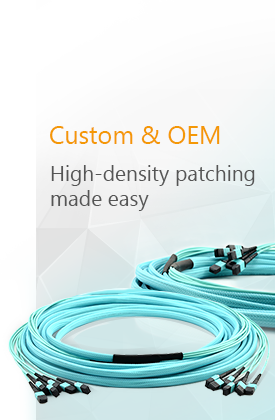In the ever-evolving world of telecommunications, maintaining efficient and reliable connectivity is paramount. Fiber trunk cables are a critical component in achieving this goal. These high-capacity cables are designed to connect major nodes within a network, ensuring robust data transmission over long distances. By consolidating multiple fibers into a single, manageable cable, fiber trunk cables simplify network infrastructure, reduce installation time, and enhance overall performance. This article delves into the features, benefits, and applications of fiber trunk cables, highlighting their indispensable role in modern network solutions.
Key Features of Fiber Trunk Cables
-
High Fiber Count Fiber trunk cables are available in a variety of fiber counts, from a few fibers to several hundred. This allows for the consolidation of numerous connections into a single cable, simplifying network design and installation.
-
Durability and Protection These cables are built to withstand harsh environmental conditions. They often feature robust outer jackets and armor for added protection against physical damage, ensuring longevity and reliable performance even in challenging environments.
-
Pre-Terminated Options Many fiber trunk cables come pre-terminated with connectors, reducing installation time and labor costs. This also minimizes the risk of errors during installation, as pre-terminated cables are factory tested for quality and performance.
-
Low Insertion Loss Fiber trunk cables are designed to maintain low insertion loss, ensuring minimal signal degradation over long distances. This is crucial for maintaining high data transmission rates and overall network efficiency.
-
Flexibility in Design Available in various configurations, fiber trunk cables can be tailored to meet specific network requirements. Options include different fiber types (single-mode, multimode), connector types, and cable lengths, providing flexibility in network design and implementation.
Advantages of Using Fiber Trunk Cables
-
Simplified Network Management By consolidating multiple fibers into a single cable, fiber trunk cables simplify network infrastructure. This reduces the complexity of cable management and makes it easier to troubleshoot and maintain the network.
-
Cost-Effective The use of fiber trunk cables can significantly reduce installation and maintenance costs. Pre-terminated options eliminate the need for on-site splicing, reducing labor costs and installation time.
-
Enhanced Performance With low insertion loss and high-quality materials, fiber trunk cables ensure reliable and efficient data transmission. This is essential for maintaining the performance and reliability of modern high-speed networks.
-
Space-Saving Fiber trunk cables reduce the amount of physical cabling required, saving space in cable trays, ducts, and other infrastructure. This is particularly beneficial in data centers and other environments where space is at a premium.
Applications of Fiber Trunk Cables
-
Data Centers In data centers, fiber trunk cables are used to connect servers, storage systems, and network devices. Their high capacity and reliability make them ideal for handling the large volumes of data processed in these environments.
-
Telecommunications Telecom operators use fiber trunk cables to link central offices and network nodes. These cables support the high bandwidth and low latency requirements of modern telecommunications networks.
-
Enterprise Networks Large enterprises use fiber trunk cables to connect different buildings and departments within a campus. This ensures seamless data flow and communication across the entire organization.
-
Broadcasting The broadcasting industry relies on fiber trunk cables to transmit high-definition video and audio signals. Their high capacity and low signal loss are crucial for maintaining the quality of broadcast transmissions.
-
Healthcare In healthcare facilities, fiber trunk cables connect various departments and equipment, supporting critical applications such as electronic medical records and telemedicine.
Conclusion
Fiber trunk cables are a cornerstone of modern network infrastructure, offering high capacity, reliability, and flexibility. By simplifying network management, reducing costs, and enhancing performance, they play a vital role in ensuring efficient connectivity across various industries. From data centers to telecommunications and beyond, fiber trunk cables are essential for maintaining the robust and reliable networks that underpin today's digital world.


